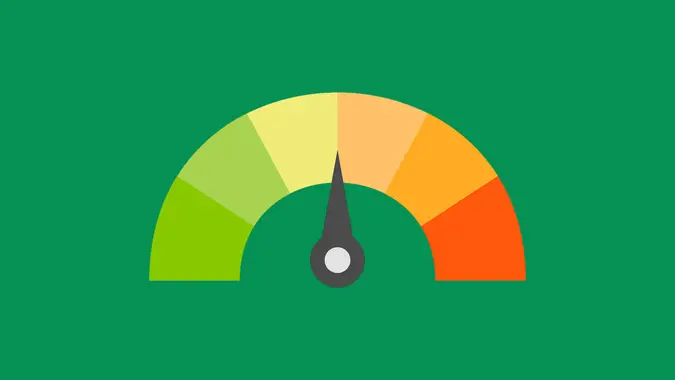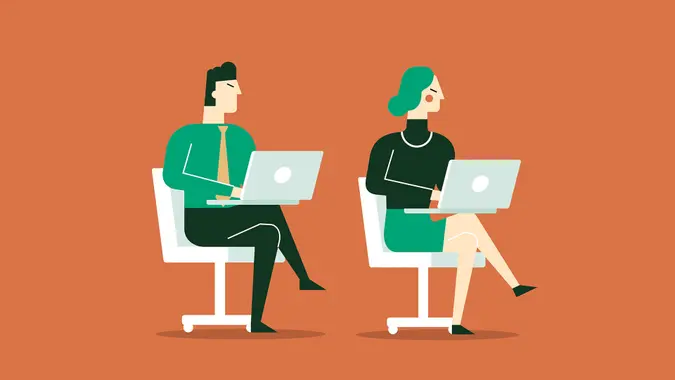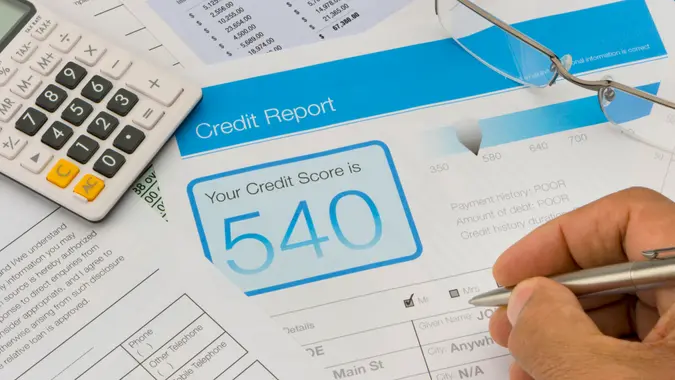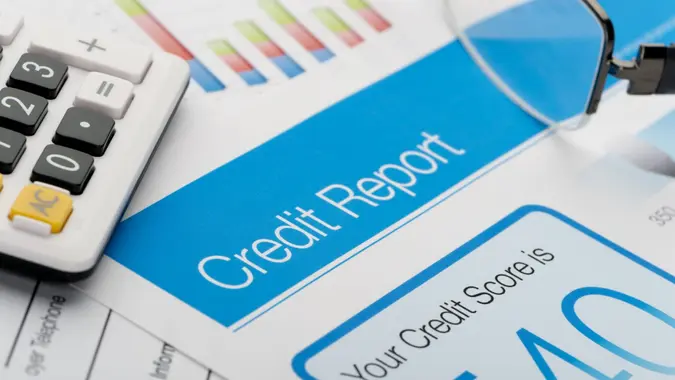How To Prevent Credit Card Fraud

Commitment to Our Readers
GOBankingRates' editorial team is committed to bringing you unbiased reviews and information. We use data-driven methodologies to evaluate financial products and services - our reviews and ratings are not influenced by advertisers. You can read more about our editorial guidelines and our products and services review methodology.

20 Years
Helping You Live Richer

Reviewed
by Experts

Trusted by
Millions of Readers
Approximately two in three cardholders have experienced fraud, according to a 2025 Credit Card Fraud Report and Statistics from Security.org, and 92% of fraudulent charges occurred while the card was still in the owner’s possession.
Unfortunately, there are a variety of methods to steal credit card information without ever touching your card. It’s more important than ever for cardholders to understand how fraud happens and what to do to prevent it.
Common Types of Credit Card Fraud
Here’s how your credit card information can be stolen
- Clicking on fraudulent links in emails or text messages to get victims to provide financial information
- Attaching skimming devices to point-of-sale terminals for the purpose of copying credit card numbers
- Gathering credit card data using RFID technology
- Accessing credit card data through public Wi-Fi or malware
- Gathering credit card data from breaches
Best Practices for Preventing Credit Card Fraud
It’s important to know how to prevent credit card fraud. Here are some steps you can take.
Protect Your Physical Card
- Store your card in an RFID wallet to keep scammers from using RFID tech to steal the card’s information
- Never loan your card to anyone or leave it lying around
- At restaurants with table service, pay with cash to keep your cards in sight
- Protect your card number and PIN number from prying eyes when using an ATM.
Strengthen Your Online Security
- Use strong passwords, password managers and two-factor authentication
- Ensure you only use HTTPS websites when browsing online because they are encrypted to protect your activity
- Install antivirus software
Monitor Your Credit Card Activity Regularly
Keep on top of your credit card activity by logging into your account every week and checking for unauthorized activity. This can help you quickly identify and report fraudulent activity.
Be Cautious With Public Wi-Fi and Card Readers
Using contactless payment methods instead of card readers can help you avoid card skimmers.
Don’t view enter your credit card or check your mobile bank account while using public Wi-Fi. Public Wi-Fi networks can be easier to hack than your home network.
What To Do If Your Credit Card Information Is Stolen
If your credit card information is stolen, here’s what you should do.
Report the Fraud Immediately
Using the number on the back of your credit card or the app, contact your credit card issuer immediately to report the fraud. Your credit card issuer can cancel the card and issue you a replacement one with a new number.
Request a Refund for Any Unauthorized Charges
When someone makes unauthorized purchases with your credit card, federal law limits your liability to $50, according to the Federal Trade Commission.
However, some credit card issuers may have a $0 liability policy. In any case, ask your credit card issuer to reverse the fraudulent charges and issue a refund.
Change Your Login Information
Change the username and password that you use to log in to your credit card account.
You may also want to change your PIN. This will prevent fraudsters from accessing your account through those avenues in case the information is exposed online or through other means.
Set Up a Fraud Alert With One of the Major Credit Bureaus
Contact one of the three major credit bureaus — Experian, Equifax or TransUnion — to set up a fraud alert. It’s only necessary to contact one bureau because it will alert the other two.
A fraud alert requires creditors and lenders to take additional steps to verify an applicant’s identity before granting credit or a loan. This can protect you from someone opening loans or accounts in your name.
FAQ
Here are the answers to some of the most frequently asked questions regarding credit card fraud.- How can I tell if my credit card has been compromised?
- Besides seeing unauthorized activity on your credit card account, one of the biggest signs your credit card has been compromised is if you get a text or call from your credit card company asking if you're trying to make a purchase and you aren't.
- Other signs your card may have been compromised are having your card declined, realizing your contact information has been updated without your knowledge or receiving a notice that your credit card data was involved in a breach.
- What should I do if I see an unauthorized charge on my statement?
- Contact your card issuer immediately if you determine there's an unauthorized charge on your credit card statement. The issuer will likely cancel your card and issue you a new card with a new number.
- Are chip-enabled cards safer than magnetic stripe cards?
- Yes. Chip-enabled cards are much safer than cards with a magnetic stripe because chip cards use dynamic authentication. This means the chip generates a unique code for each transaction, making it difficult for criminals to steal your information. On top of that, the data is encrypted, so copying the card data is much harder.
- Can I recover money lost to credit card fraud?
- Yes. Federal law prohibits credit card issuers from holding the cardholder liable for more than $50 of unauthorized charges, and some credit card issuers have a $0 liability policy.
- How often should I check my credit card statements for fraud?
- By law, cardholders have up to 60 days to report fraud or billing errors to the card issuer, so, at the very least, review your card's monthly statement when it arrives. However, if you think your credit card data might have been compromised, you don't have to wait for your billing statement. Instead, you can monitor charges by logging in to your account online.
Our in-house research team and on-site financial experts work together to create content that’s accurate, impartial, and up to date. We fact-check every single statistic, quote and fact using trusted primary resources to make sure the information we provide is correct. You can learn more about GOBankingRates’ processes and standards in our editorial policy.
- Security. org. "62 Million Americans Experienced Credit Card Fraud Last Year."
- PC Mag. "The Best Android Antivirus for 2025."
- Norton. "Public Wi-Fi: A guide to the risks and how to stay safe."
- Federal Trade Commission. "Using Credit Cards and Disputing Charges."
 Written by
Written by  Edited by
Edited by 























